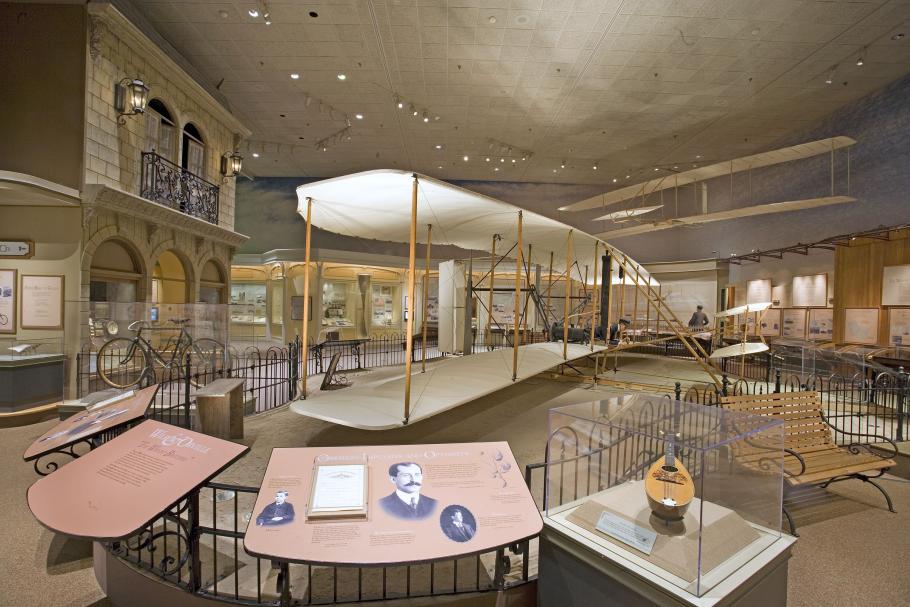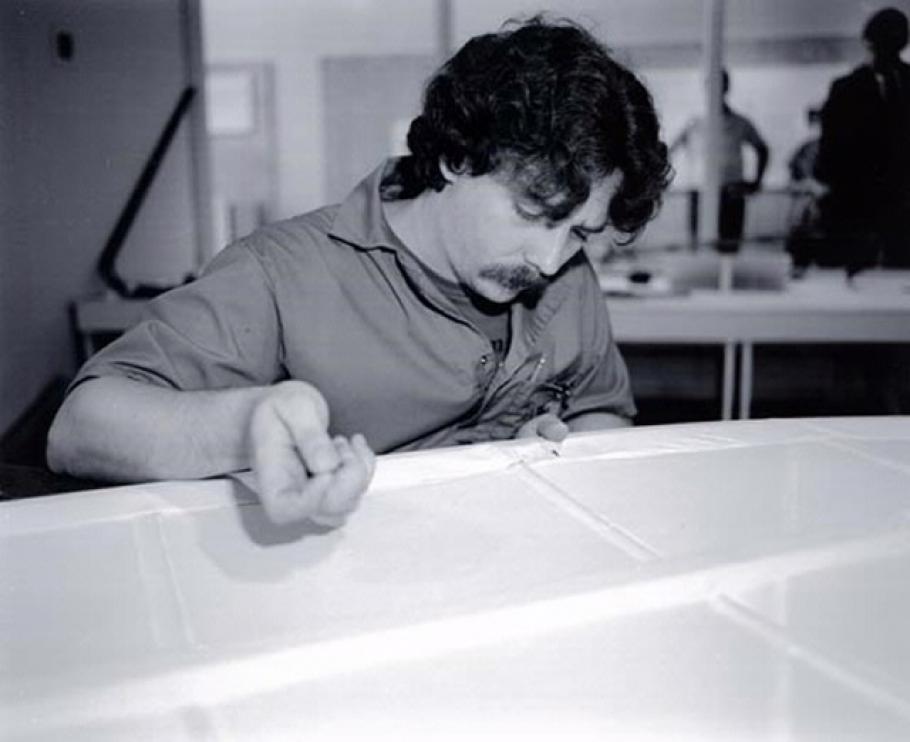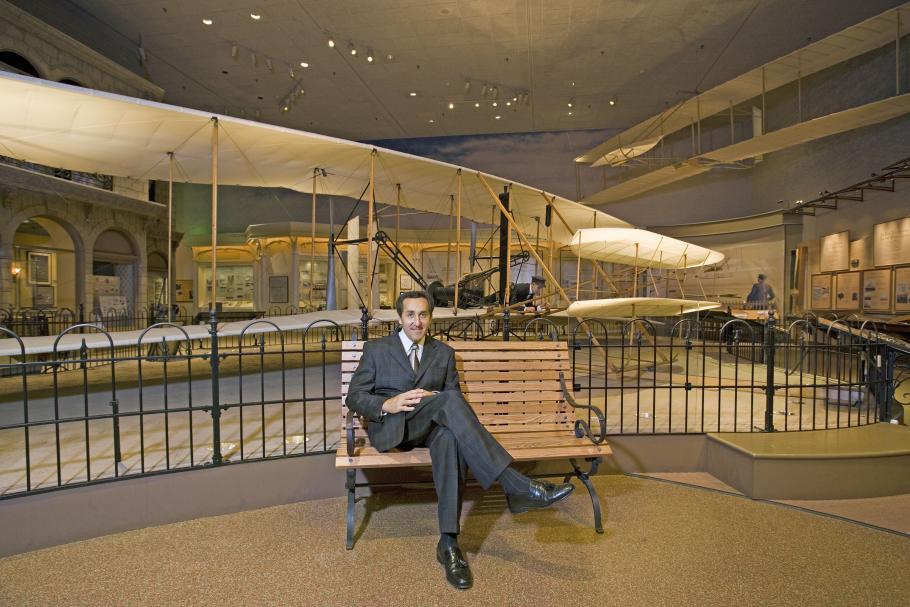Are at Kitty Hawk in 1903 Once Again and We Must Not Wait 20 Years to Realize It
The Smithsonian literally has millions of objects in its vast collections. Everything from specimens of flora and fauna from effectually the globe, to machines that have shaped the modern world, to cultural artifacts that reflect our rich diversity, to of import works of art. Fifty-fifty live animals at the National Zoo. Every aspect of human effort and creativity and the natural globe can be found at the Smithsonian. Among this dandy store of history, science, and art objects, some stand above the rest for their uniqueness, historical importance, and cultural value. In addition, they are objects that are powerfully associated with the Smithsonian. I like to phone call these "signature Smithsonian objects." Things such as the Promise Diamond, the Star Spangled Banner, the Lansdowne portrait of George Washington, and Charles Lindbergh's Spirit of St. Louis aeroplane are good examples—one-of-a-kind items, familiar to all, and widely known to reside at the Smithsonian. Also in this subset of signature objects is one of the most significant in the entire Smithsonian collection—the Wright Flyer, the world'south first plane.

The flight machine with which Wilbur and Orville Wright made those historic first flights at Kitty Hawk on a common cold December morning in 1903 represents a moment when the globe changed. The ability to fly has and then dramatically refashioned human existence that the accomplishment of the Wright brothers defies measure. When the Wright Flyer was installed in the Smithsonian in 1948, a visiting dignitary at the anniversary remarked, "It is a piddling as if nosotros had earlier the states the original bike." For the last 25 years, I have had the groovy privilege to be the curator of the Wright Flyer. During that quarter century I accept pored over every detail of the airplane, studied every aspect of its design, written three books about the Wright brothers, mounted a major exhibition, and given countless lectures about this antiquity. I have spent a career with this object and at this point have a very personal connection with the Flyer. I'll even admit to a fleck of an emotional attachment to this machine. Needless to say, I never tire of talking about the Flyer and sharing its wonderful story. Only at that place is ane matter that always frustrates me when I hear it—when people say the airplane in the Smithsonian is non the real Wright Flyer! Let me assure yous, the airplane on view at the Smithsonian National Air and Space Museum is indeed the actual machine with which the Wrights made their pathbreaking first flights at Kitty Hawk. IT IS THE REAL WRIGHT FLYER. So how could anyone dubiety this? Almost of the reasons are elementary. Outset, the Flyer currently doesn't expect sometime. The near pristine white fabric on its wooden framework doesn't look to be a century old. Well, it isn't. In 1984 and 1985, the museum did conservation work on the Flyer. It was disassembled, inspected, cleaned, and documented within and out. The near important determination we had to brand was whether or not to save the tattered fabric. There was much internal debate about this, but in the terminate we put new material on the Flyer. Critical to that decision was that the fabric then on the airplane was not on it when it flew in 1903. In 1928, Orville Wright loaned the Flyer to the London Science Museum, where information technology stayed for 20 years. In preparation for the trip to England, Orville recovered the Flyer entirely. So when the Smithsonian received the aeroplane in 1948, none of the fabric on it dated from 1903. Because its condition and that the airplane never flew with that textile, for the long-term preservation involvement of the artifact, new fabric was put on in 1985, precisely to the specifications of 1903. So to the uninitiated, the Flyer currently doesn't wait old and people sometimes make the assumption that information technology is non the original airframe.

Some other reason visitors sometimes think the Wright Flyer in the Smithsonian is not real is because so many modern reproductions of the Flyer are on view in other museums. Peculiarly leading up to the centennial of the first flights in 2003, many reproduction Flyers take been built. With then many copies out there and the real Wright Flyer having relatively new cloth on it, one can meet how visitors might get dislocated. Finally, many people know that after the Wrights made their last flight on December 17, 1903, the Flyer was upturned past a strong gust of air current and severely damaged. Thinking the airplane was destroyed, some of these folks are under the impression that the original 1903 Wright Flyer doesn't exist at all. So let me brand clear for all, when you visit the National Air and Space Museum and stand earlier the Wright Flyer you volition be merely a few feet away from the original, real, world-changing 1903 Wright Flyer—not a re-create. There is also a good chance you lot'll find me in the gallery spending time with my one-time friend, the incessantly fascinating world's first airplane—a signature Smithsonian object.

Source: https://airandspace.si.edu/stories/editorial/real-wright-flyer
0 Response to "Are at Kitty Hawk in 1903 Once Again and We Must Not Wait 20 Years to Realize It"
Enregistrer un commentaire